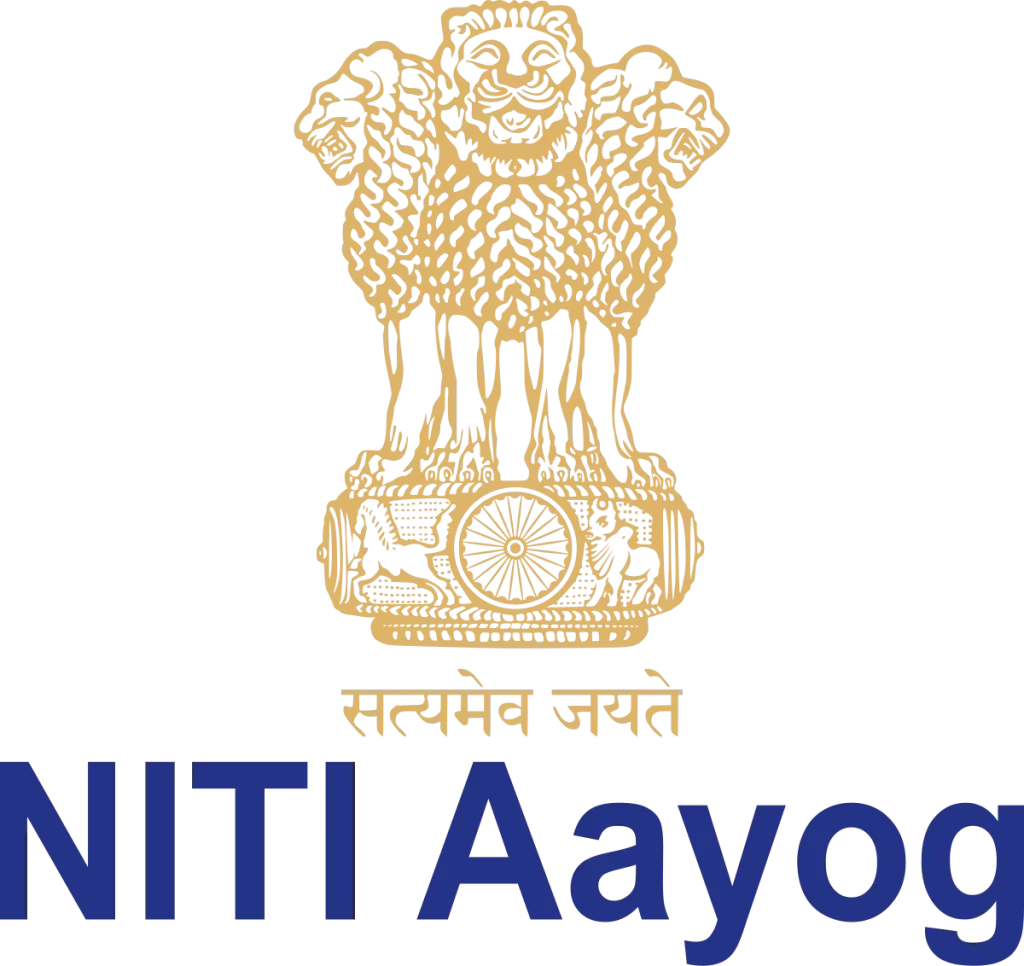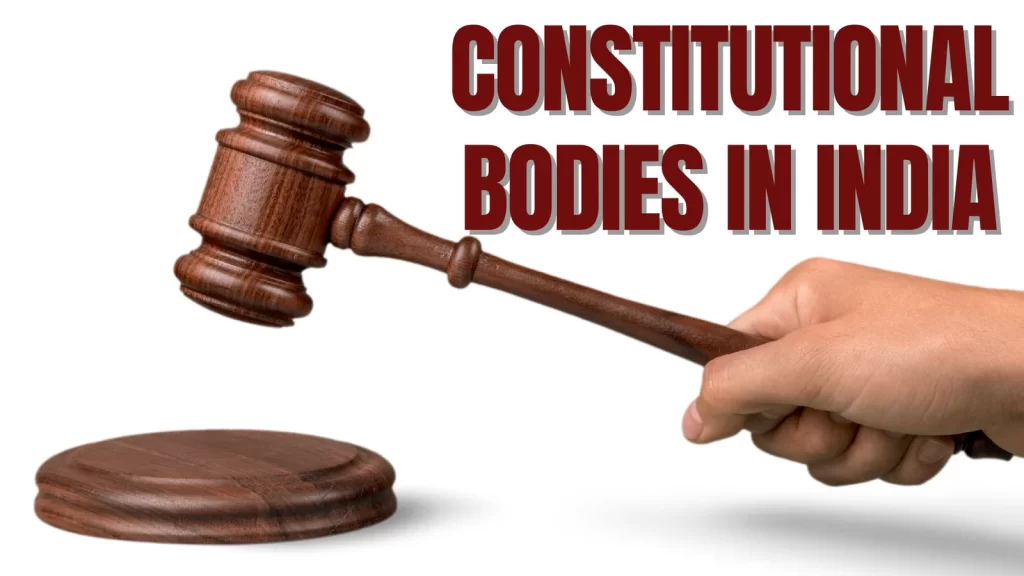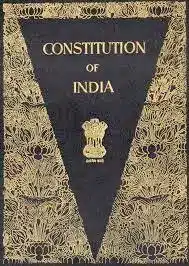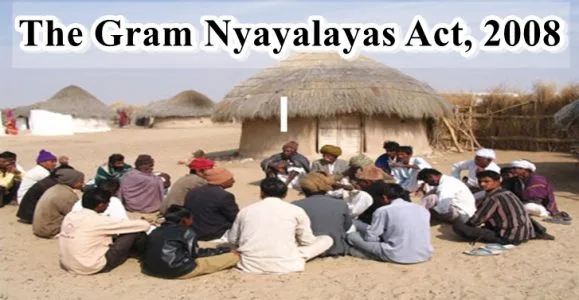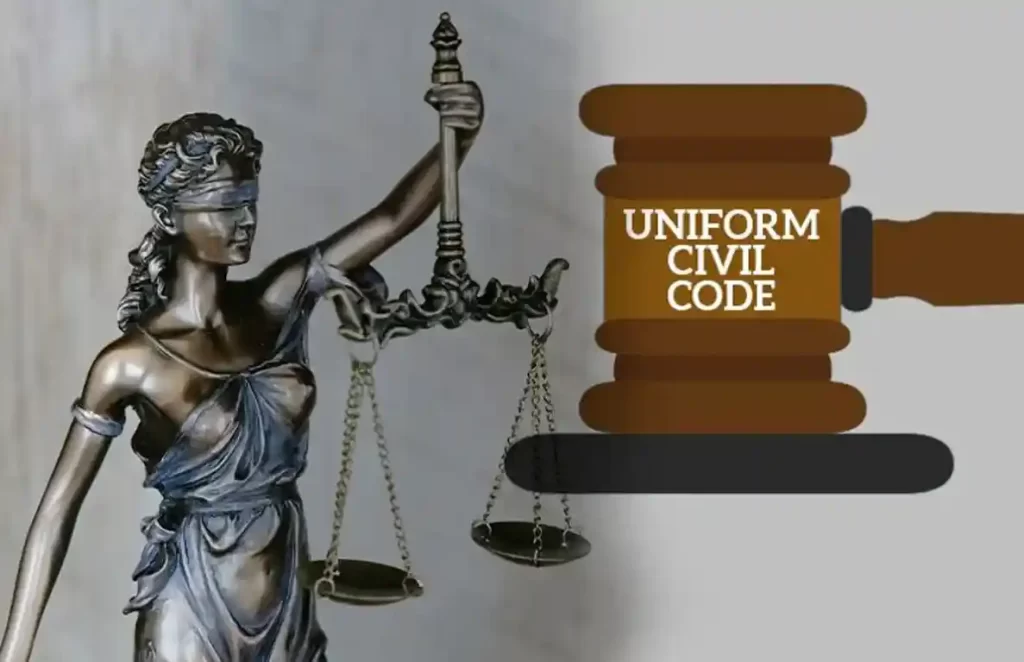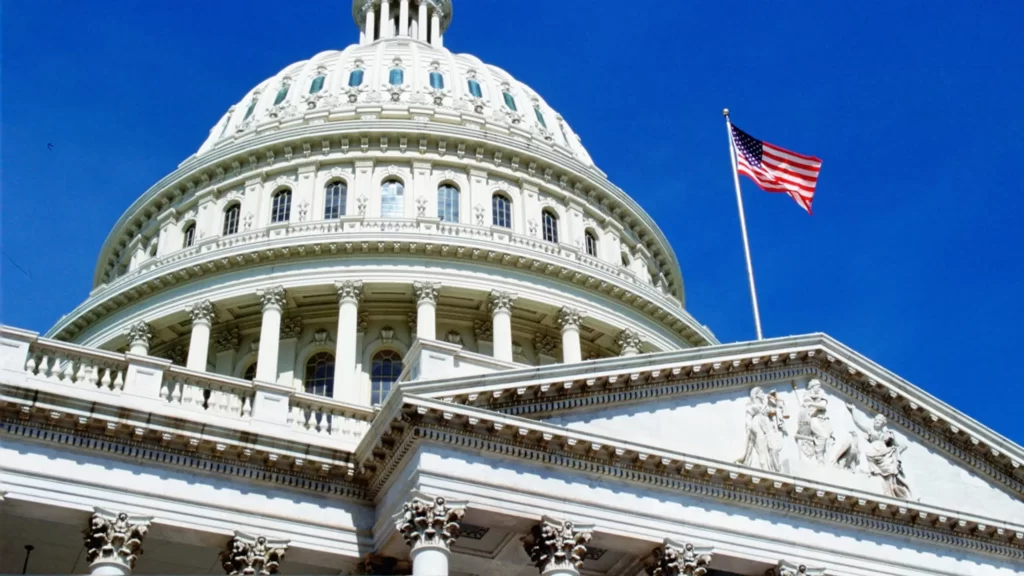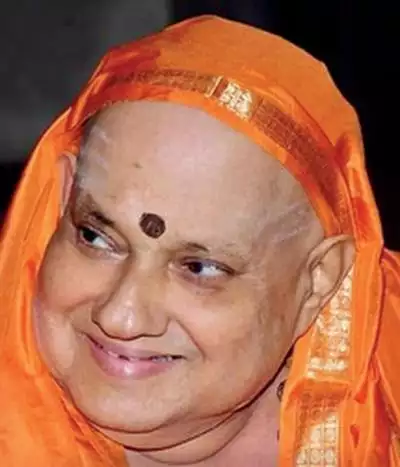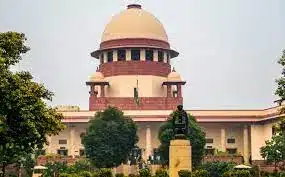Introduction of Indian Judiciary
- The Judiciary is a system of courts which interpret and apply the law. The role of the courts is to decide cases by determining the relevant facts and the relevant law, and applying the relevant facts to the relevant law.
- The Indian judicial system follows the common law system based on recorded judicial precedents as inherited from the British colonial legacy and the princely states since the mid-19th century, and has partly retained the characteristics of practices from the ancient and medieval times.
- The court system of India comprises the Supreme Court of India, the High Courts and subordinate courts at district, municipal and village levels.
Hierarchy of courts
The Indian judiciary is divided into several levels in order to decentralize and address matters at the grassroots levels. The basic structure is as follows:
- Supreme Court: It is the Apex court of the country and was constituted on 28th January 1950. It is the highest court of appeal and enjoys both original suits and appeals of High Court judgments. The Supreme Court is comprised of the Chief Justice of India and 33 other judges. Articles 124-147 of the Constitution of India lay down the authority of the Supreme Court.
- High Courts: High Courts are the highest judicial body at the State level. Article 214 lays down the authority of High Courts. There are 25 High Courts in India. High Courts exercise civil or criminal jurisdiction only if the subordinate courts in the State are not competent to try the matters. High Courts may even take appeals from lower courts. High Court judges are appointed by the President of India upon consultation with the Chief Justice of India, the Chief Justice of the High Court and the Governor of the State.
- District Courts: District Courts are established by the State Governments of India for every district or group of districts based on the caseload and population density. District Courts are under the direct administration of High Courts and are bound by High Court judgments. Every district generally has two kinds of courts: (a). Civil Courts and (b). Criminal Courts. District Courts are presided over by District Judges. Additional District Judges and Assistant District Judges may be appointed based on the caseload. Appeals against District Court judgments lie in the High Court.
- Lok Adalats/Village Courts: these are subordinate courts at the village level which provide a system for alternate dispute resolution in villages.
- Tribunals: the Constitution provides the government with the power to set up special Tribunals for the administration of specific matters such as tax cases, land cases, consumer cases etc.
*Appellate jurisdiction refers to the authority of a court to rehear/review a case decided by a lower court. In India, appellate jurisdiction is vested in both the Supreme Court and High Courts. They may either overrule or uphold the judgments of lower courts.
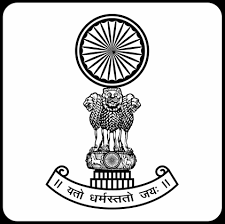
Judicial Authority of the Supreme Court
- Articles 141 and 144 of the Constitution uphold the authority and jurisdiction given to the Supreme Court to make decisions and uphold the law of the land.
- Article 141 : Article 141 lays down that “the law declared by the Supreme Court shall be binding on all courts within the territory of India.”
- Article 144 : Article 144 lays down that “all authorities, civil and judicial, in the territory of India shall act in aid of the Supreme Court.”
- The Supreme Court has the power to hold any authority in contempt if they disregard or disobey the order of the court.
- Article 129 : Grants Supreme Court the power to punish for contempt of itself.
- Article 142(2) : Enables the Supreme Court to investigate and punish any person for its contempt.
- Article 215 : Grants every High Court the power to punish for contempt of itself.
Binding value of Judicial Precedents in Indian Judiciary
Since India is a common law country, previously decided judgments of higher courts such as the Supreme Court and High Courts are binding on subordinate and lower courts, i.e., subordinate courts are bound to follow the decisions and hold them to be the law. Precedents are an important source of law in India. The binding value of different courts in the court hierarchy is as follows:
- Decisions of the Supreme Court are binding on all courts in India. The Supreme Court is not bound by decisions of High Courts, lower courts or other judicial authorities.
- Decisions of a High Court are binding on all inferior courts (as long as they don’t conflict with Supreme Court decisions) within its jurisdiction but holds only persuasive value for courts outside its jurisdiction. In case the decisions of the High Court conflict with the decisions of a similar bench, the matter is referred to a higher bench.
- Lower courts are bound by decisions of higher courts in their own states. Decisions by High Courts of other states hold only persuasive value.
The Supreme Court
- The Indian Constitution has established an integrated judicial system which places Supreme Court at the top and the High Courts below it, followed by a hierarchy of Subordinate Courts.
- The Constitutional provisions related to the Supreme Court are contained in Part V from Art 124 to 147.
- Initially, there was a Chief Justice and seven other Judges in the Supreme Court and now the number has increased to 34 judges including the Chief Justice of India in 2009. The Parliament has been given the power to increase the number of Supreme Court judges, according to the needs and circumstances. Recently, President gave his assent to the Supreme Court (Number of Judges) Amendment Bill, which will increase the number of Supreme Court Judges.
Chief Justice of India
- The Chief Justice of India (CJI) is the highest judicial officer of the country.
- The nature of work of CJI is largely administrative and that includes allocating work amongst the judges of the Supreme Court.
Acting Chief Justice of India
- Under Article 126, when the office of Chief Justice of India is vacant or when the Chief Justice is, by reason of absence or otherwise, unable to perform the duties of his office, the duties of the office shall be performed by such one of the other Judges of the Court as the President may appoint for the purpose.
Appointment of Supreme Court Judges
- The Judges of the Supreme Court are appointed by the President.
- The Chief Justice is appointed by the President after consultation with such Judges of the Supreme Court and High Court as he/she deems necessary.
- The other judges are appointed by the President after consultation with the Chief Justice and such other judges of the Supreme Court, and High Courts as he/she deems necessary.
- The consultation with the Chief Justice is obligatory in the case of appointment of judge other than Chief Justice.
Qualifications for Supreme Court Judges
- A person shall not be qualified for appointment as a Judge of the Supreme Court unless he/she
- Is a citizen of India, and
- Has been for at least five years a judge of a High Court or a two such Courts in succession; or
- Has been for at least ten years an advocate of a High Court or of two or more such Courts in succession or is, in the opinion of the President, a distinguished jurist.
- Every person appointed to be a Judge of the Supreme Court shall, before he/she enters upon his/her office, make and subscribe before the President an oath of affirmation according to the form set out in the Third Schedule of the Constitution.
- The Constitution does not prescribe minimum age limit for a judge to occupy his/her office.
- A Judge of the Supreme Court continues to hold the office till he/she attains the age of 65 yrs.
- A Judge of the Supreme Court may tender his/her resignation to the President even before he/she reaches age of 65 years.
- A Judge of Supreme Court, after retirement, shall not do legal practice in any court in the territory of India and shall not plead before any authority under the Government
Process of Impeachment
- A judge may be removed from office through a motion adopted by Parliament on grounds of ‘proven misbehavior or incapacity’.
- The Constitution does not use the word ‘impeachment’ for this purpose.
- The Constitution provides that a judge can be removed only by an order of the President, based on a motion passed by both Houses of Parliament.
- The Judges Enquiry Act (1968) regulates the procedure relating to the removal of a judge of the Supreme Court by the process of impeachment:
- A motion for removal supported by at least 100 members in Lok Sabha or 50 members in Rajya Sabha is required for admission of motion for removal of the judge.
- The Presiding officer/Chairman of Lok Sabha or Rajya Sabha constitutes an inquiry committee to verify the charges of accusation. The inquiry committee consists of CJI/Supreme Court judge, a High Court Chief Justice, and a distinguished jurist is to probe the charges.
- If the inquiry committee is satisfied that the judge has been guilty, it may recommend for removal of that judge.
- Both the Houses shall have to pass a resolution to this effect by a special majority in the same session i.e. majority of the total membership of the house and two-third members to the house present and voting.
- The judge stands evicted by an order of the President.
- No case of removal of SC judge has happened so far. The case of Justice V. Ramaswamy in (1991-93) was not passed because of absence of majority in Lok Sabha when Congress MPs abstained from voting.
Ad-hoc and Retired Judges
- Article 127 says that if at any time there may not be a quorum of the Judges of the Supreme Court available to hold or continue any session of the Court, the Chief Justice of India can appoint a Judge of a High Court as an adhoc Judge of the Supreme Court for a temporary period.
- He can do so only with the previous consent of the President and after consultation with the Chief Justice of the High Court concerned.
- The Judge so appointed should be qualified for appointment as a Judge of the Supreme Court.
- It shall be the duty of the Judge who has been so designated, in priority to other duties of his office, to attend the sittings of the Supreme Court at the time and for the period for which his attendance is required, and while so attending he shall have all the jurisdiction, powers and privileges, and shall discharge the duties, of a Judge of the Supreme Court.
Retired Judges
- Article 128 says that the Chief Justice of India may at any time, with the previous consent of the President request a retired judge of the Supreme Court or a Retired Judge of High Court who is duly qualified for appointment as a judge of the Supreme Court, to act as a Judge of the Supreme Court for a temporary period.
- Such judge while so sitting and acting be entitled to such allowances as the President may determine and has all the jurisdiction, powers and privileges of a Judge of Supreme Court.
- But he/ she will not otherwise be deemed to be a Judge of the Supreme Court.
Jurisdiction of the Supreme Court
Original Jurisdiction
- Under Article 131, subject to the provisions of this Constitution, the Supreme Court shall, to the exclusion of any other court, have original jurisdiction any dispute:
- Between the Government of India and States;
- Between the Government of India and any State or States on one side and one or more other States on the other; or
- Between two or more States, if and in so far as the dispute involves any question (whether of law or fact) on which the existence or extent of a legal right depends.
- The Supreme Court has exclusive original jurisdiction in the above cases. Exclusive means, no other court can decide such disputes and original means, the power to hear such disputes in the first instance, not by way of appeal.
- The said jurisdiction shall not extend to a dispute arising out of any treaty, agreement, covenant, engagement, or other similar instrument which, having been entered into or executed before the commencement of this Constitution, continues In operation after such commencement, or which provides that the said jurisdiction shall not extend to such a dispute.
- There are certain provisions in the Constitution which exclude from the Original Jurisdiction of the Supreme Court, Disputes specified in the provision to Art 363(1).
- Complaints as to interference with Inter-State water supplies, referred to the statutory tribunal mentioned in Art 262 (since the Parliament has enacted the Inter-State Water Disputes Act 1956).
- Matters referred to the Finance Commission (Art 280)
- Adjustment of certain expenses between the Union and the State (Art 290).
Writ Jurisdiction
- Article 32 imposes duty on the Supreme Court to enforce the Fundamental Rights. Under this Article, every individual has a right to move the Supreme Court provided there has been any infringement on his/ her Fundamental Rights.
- The Supreme Court is empowered to issue writs, including Habeas Corpus, Mandamus, Prohibition, Quo Warranto and Certiorari to enforce Fundamental Rights.
- The Supreme Court has original jurisdiction in the sense that an aggrieved citizen can directly go to the Supreme Court, not necessarily by way of appeal.
- However, the writ jurisdiction of the Supreme Court is not exclusive. The high courts are also empowered to issue writs for the enforcement of the Fundamental Rights.
Appeallate Jurisdiction
- The Supreme Courte enjoys a wide appellate jurisdiction which can be classified under four heads:
- Appeals in constitutional matters.
- Appeals in civil matters.
- Appeals in criminal matters.
- Appeals by special leave.
- Constitutional Matters: In the constitutional cases, an appeal can be made to the Supreme Court against the judgment of a high court if the high court certifies that the case involves a substantial question of law that requires the interpretation of the Constitution. Based on the certificate, the party in the case can appeal to the Supreme Court on the ground that the question has been wrongly decided.
- Civil Cases –In civil cases, an appeal lies to the Supreme Court from any judgment of a high court if the high court certifies:
- That the case involves a substantial question of law of general importance.
- That the question needs to be decided by the Supreme Court. Originally, only those civil cases that involved a sum of 20,000 could be appealed before the Supreme Court. But this monetary limit was removed by the 30th Constitutional Amendment Act of 1972.
- Criminal Matters- The Supreme Court hears appeals against the judgment in a criminal proceeding of a high court if the high court:
- Has on appeal reversed an order of acquittal of an accused person and sentenced him to death; or
- Has taken before itself any case from any subordinate court and convicted the accused person and sentenced him to death; or
- Certifies that the case is a fit one for appeal to the Supreme Court.
- In the first two cases, an appeal lies to the Supreme Court as a matter of right (i.e without any certificate of the high court). But if the high court has reversed the order of conviction and has ordered the acquittal of the accused, there is no right to appeal to the Supreme Court. In 1970, the Parliament had enlarged the Criminal Appellate Jurisdiction of the Supreme Court. Accordingly, an appeal lies to the Supreme Court from the judgment of a high court if the high court:
- Has on appeal, reversed an order of acquittal of an accused person and sentenced him to imprisonment for life or for ten years; or
- Has taken before itself any case from any subordinate court and convicted the accused person and sentenced him to imprisonment for life or for ten years. Further, the appellate jurisdiction of the Supreme Court extends to all civil and criminal cases in which the Federal Court of India had jurisdiction to hear appeals from the high court but which are not covered under the civil and criminal appellate jurisdiction of the Supreme Court mentioned above.
- Appeal by Special Leave: The Supreme Court is authorized to grant in its discretion special leave to appeal from any judgment in any matter passed by any court or tribunal in the country (except military tribunal and court martial). This provision contains the four aspects as under:
- It is a discretionary power and hence, cannot be claimed as a matter of right.
- It can be granted in any judgment whether final or interlocutory.
- It may be related to any matter—constitutional, civil, criminal, income tax, labour, revenue, advocates, etc.
- It can be granted against any court or tribunal and not necessarily against a high court (of course, except a military court).
Advisory Jurisdiction
- One of the Salient features of the Supreme Court is its consultative role (Article 143). The President can refer to the Court either a question of law or a question of fact, provided that it is of public importance. However, it is not compulsory for the Court to give its advice.
- The President is empowered to refer to the Supreme Court for its opinion, disputes arising out of any treaty, agreement etc., which had been entered into or executed before the commencement of the Constitution. Here the Supreme Court must tender its opinion to the
Judicial Independence
- The Constitution seeks to ensure the independence of Supreme Court Judges in various ways. Judges are generally appointed on the basis of seniority and not on political preference.
- Judge of the Supreme Court cannot be removed from office except by an order of the President passed after an address in each House of Parliament supported by a majority of the total membership of that House and by a majority of not less than two-thirds of members Present and voting, and presented to the President in the same Session for such removal on the ground of proved misbehavior or incapacity.
- The salaries and allowances of a judge of the Supreme Court cannot be reduced after appointment.
- A person who has been a Judge of the Supreme Court is debarred from practicing in any court of law or before any other authority in India.
A Court of Record
- Article 129 states that the Supreme Court of India shall be a Court of Record. As a Court of Records, the Supreme Court has following powers:-
- The Judgments, processing and acts of the Supreme Court are recorded for perpetual memory and testimony. These are recognized as legal precedents and legal references.
- The Supreme Court has power to punish for contempt of court, either with simple imprisonment or with fine. In 1991, the Supreme Court has ruled that it has power to punish for contempt not only of itself but also of high courts, subordinate courts and tribunals functioning in the entire country.
- Contempt of court may be civil or criminal. Civil contempt means willful disobedience to any judgment, order, writ or other process of a court or willful breach of an undertaking given to a court.
- Criminal contempt means the publication of any matter or doing an act which scandalizes or lowers the authority of a court or prejudices or interferes with the due course of a judicial proceeding or interferes or obstructs the administration of justice in any other manner.
The High Courts
- The High Court’s stands at the head of the judiciary in a State. There shall be a High Court for each State (Article 214).
- The Judiciary in the States consists of a High Court and the Subordinate Courts. The Parliament can, however, establish by law, a common High Court for one or more State(s) and one or more Union Territory (Art 231).
- Every High Court shall be a Court of record (Art 215).
- The High Courts in India find their roots in the British Period when three High Courts namely Bombay, Madras and Calcutta were set-up in 1862.
- At present, there are 25 High courts in India.
Appointments of the Judges
- The judges of a high court are appointed by the President. The chief justice is appointed by the President after consultation with the chief justice of India and the governor of the state concerned.
- For appointment of other judges, the chief justice of the concerned high court is also consulted.
- In case of a common high court for two or more states, the governors of all the states concerned are consulted by the president.
Additional and Acting Judges
- The President can appoint duly qualified persons as additional judges of a high court for a temporary period not exceeding two years when:
- There is a temporary increase in the business of the high court; or
- There are arrears of work in the high court.
- The President can also appoint a duly qualified person as an acting judge of a high court when a judge of that high court (other than the chief justice) is:
- Unable to perform the duties of his office due to absence or any other reason; or
- Appointed to act temporarily as chief justice of that high court .
- An acting judge holds office until the permanent judge resumes his office. However, both the additional and acting judge cannot hold office after attaining the age of 62 years.
Acting Chief Justice:
- The President can appoint a judge of a high court as an acting chief justice of the high court when:
- The office of chief justice of the high court is vacant; or
- The chief justice of the high court is temporarily absent; or
- The chief justice of the high court is unable to perform the duties of his office
Removal of Judges
- Removal of a High Court Judge is governed by Articles 217 (1) (b) and 218 of the Constitution on the ground of proven misbehavior or incapacity. The words misbehavior or incapacity has neither been defined nor clarified in the Constitution.
- The complaint about misbehavior or incapacity against a judge has to be probed under the Judges (Inquiry) Act, 1968.
Qualifications for Judges
The qualifications required under the Constitution for a person to be appointed as a Judge of a High Court:
- Must be a citizen of India; and
- Must have held a judicial office in the territory of India for at least ten years; or
- Must have been an advocate of a High Court or two or more such Courts in succession for at least ten years.
Transfer of a Judges between High Courts
A Judge of a High Court can be transferred without his/her consent by the President (Article 222).
- Consultation with the Chief Justice of India must be full and effective.
- All relevant facts relating to the transfer of a Judge of a High Court must be provided to the Chief Justice of India.
- The opinion provided by the Chief Justice shall have primacy and is binding on the President.
Jurisdiction of the High Courts
Original Jurisdiction
- It means the power of a high court to hear disputes in the first instance, not by way of appeal. It extends to the following:
- Matters of admiralty, will, marriage, divorce, company laws and contempt of court
- Disputes relating to the election of members of Parliament and state legislatures.
- Regarding revenue matter or an act ordered or done in revenue collection.
- Enforcement of fundamental rights of citizens.
- Cases ordered to be transferred from a subordinate court involving the interpretation of the Constitution to its own file.
Appellate Jurisdiction
- As Courts of appeal, all High Courts entertain appeals in civil and criminal cases from their subordinate courts as well as on their own.
- They have, however, no jurisdiction over tribunals established under the laws relating to the Armed Forces of the Country.
- The appellate jurisdiction of a high court is wider than its original jurisdiction.
Civil Matters: The civil appellate jurisdiction of a high court is as follows:
- First appeals from the orders and judgments of the district courts, additional district courts and other subordinate courts lie directly to the high court, on both questions of law and fact, if the amount exceeds the stipulated limit.
- Second appeals from the orders and judgments of the district court or other subordinate courts lie to the high court in the cases involving questions of law only (and not questions of fact).
- The Calcutta, Bombay and Madras High Courts have provision for intra court appeals. When a single judge of the high court has decided a case (either under the original or appellate jurisdiction of the high court), an appeal from such a decision lies to the division bench of the same high court.
- Appeals from the decisions of the administrative and other tribunals lie to the division bench of the state high court. In 1997, the Supreme Court ruled that the tribunals are subject to the writ jurisdiction of the high courts. Consequently, it is not possible for an aggrieved person to approach the Supreme Court directly against the decisions of the tribunals, without first going to the high courts.
Criminal Matters: The criminal appellate jurisdiction of a high court is as follows:
Appeals from the judgments of session’s court and additional session’s court lie to the high court if the sentence is one of imprisonment for more than seven years. It should also be noted here that a death sentence (popularly known as capital punishment) awarded by a sessions court or an additional sessions court should be confirmed by the high court before it can be executed, whether there is an appeal by the convicted person or not.
In some cases specified in various provisions of the Criminal Procedure Code (1973), the appeals from the judgments of the assistant session’s judge, metropolitan magistrate or other magistrates (judicial) lie to the high court.
Writ Jurisdiction
- Under Article 226 of the Constitution, the High Courts are given powers of issuing writs not only for the enforcement of the Fundamental Rights, but also for other purposes. In exercise of this power, a Court may issue the same type of writs, orders or directions which the Supreme Court is empowered to issue under Article 32.
- The jurisdiction to issue writs under this Article is larger in the case of High Courts, for which the Supreme Court can issue them only where a Fundamental Right has been infringed, a High Court can issue them not only in such cases, but also where an ordinary legal right has been infringed.
A Court of Record
- Every High Court shall be a Court of Record (Article 215). As a court of record, a High Court has two powers. There are as follows:
- The Judgments, proceedings and acts of the High Courts are recorded for perpetual memory and testimony. These records are admitted to be of evidentiary value and cannot be questioned when produced before any subordinate Court.
- It has power to punish for contempt of Court, either with simple imprisonment or with fine us with both.
Administrative Functions
- The High Court control and supervise the working of the courts subordinate to them and frame rules and regulations for the transaction of their business. Under Article 227, every High Court has the power of superintendence over all the Courts and tribunals except those dealing with the Armed Forces functioning within its territorial jurisdiction.
- In exercise of this power, the High Court may
- call for returns from such Courts;
- make an issue general rules and prescribe forms for regulating the practice and proceedings of such Courts;
- Prescribe forms in which books and accounts shall be kept by the offices of any such Courts, and transfer cases from one Court to another.
- Under Article 235, the High Court exercise control over the District Courts and the subordinate courts in matters of posting, promotion etc. According to Article 229 of the Constitution, every High Court has been ensured a complete control over the members of its staff. The Chief Justice of the High Court is empowered to appoint officers and servants of the Court.
Control over Subordinate Courts
Apart from above Jurisdiction the High Court also enjoys supervisory Jurisdiction over the subordinate Courts. These includes followings
- Governor in consultation with High Courts appoints the district judges.
- The administrative control of the High Courts over the District Courts and other lower courts is full in as much as postings, promotions and grant of leave etc. to any person belonging to the judicial service of a state and holding any post inferior to the post of judges is vested in High Court.
- Article 236 is the interpretation clause and explains terms like district judge, judicial service etc.
- The High Court’s Law is binding on all subordinate Courts functioning within its territorial’s Jurisdiction in the same sense as the law declared by the Supreme Court is binding on all courts in India.
Independence of the High Court
The Constitution seeks to secure the independence of Judges of the High Courts in the following ways:
- A Judge of a High Court can only be removed by the President on an address of each House of the Parliament, passed by not less than two-third of the members present and voting and by a majority of that House only on the ground of proved misbehavior or incapacity.
- After retirement, a Judge of a High Court cannot serve in any Court or before any authority in India except in the Supreme Court and a High Court other than the High Court in which he had held the office.
- Their salaries and allowances cannot be changed to their disadvantage after their appointment except during a Financial Emergency.
- Their salaries and allowances are charged on the Consolidated Fund of State and are not subject to vote in the. State Legislature.
- The conduct of the Judges of the High Court’s cannot be discussed in the Parliament, except on a resolution for the removal of the Judges.
Subordinate Courts
- Under Art 235, of the Constitution of India, administrative control over members of the Subordinate Judicial Service rests with the concerned High Courts.
- State Government frames rules and regulations in consultation with the High Court in their state to administer Subordinate Courts. Members of the State Judicial Services are governed by these rules and regulations.
- As per the direction of the Supreme Court in the All India Judges Association case a uniform designation has been given to be Subordinate Judiciary’s judicial officers all over the country, viz. District or Additional District Judge, Civil Judge (Senior Division) and Civil Judge (Junior Division) on the civil side and on criminal side, Session Judge, Additional Sessions Judge, Chief Judicial Magistrate and Judicial Magistrate, etc, as laid down in the Code of Criminal Procedure (CrPC) 1973.
District Courts
District Courts are established by the State Governments of India for every district or group of districts based on the caseload and population density. District Courts are under the direct administration of High Courts and are bound by High Court judgments. Every district generally has two kinds of courts: (a). Civil Courts and (b). Criminal Courts.
Civil Courts
Civil courts provide remedies for civil wrongs committed by individuals against other individuals and entities. Civil matters range from property disputes to breaches of contract to divorce cases. Civil courts follow the principle of ubi jus ibi remedium (for every wrong the law provides remedy). Unless expressly or impliedly barred by any other law in force, civil courts have the jurisdiction to try all suits of civil nature.
The Code of Civil Procedure (CPC) 1908 governs the procedures to be followed by civil courts in administering civil cases in India.
As a matter of fact, every suit must be instituted before the court of lowest jurisdiction (the Munsif court). Upon institution, it is decided whether the respective court has competence to try the case.
The Civil Court hierarchy in districts is as follows:
- District Court: The court of district judges is the highest civil court in a district. It exercises both judicial and administrative functions. The District Judge combines the powers of trying both civil and criminal cases. Hence, they are designated the District and Sessions Judge.
- Sub-judge Court: if the value of the subject-matter of the suit is worth more than Rs. 1 lakh, the Sub-judge and Additional Sub-judge courts may try the suit.
- Additional Sub-judge Court: this is created based on the case-load.
- Munsif Court: if the value of the subject-matter of the suit is worth Rs. 1 lakh or below, the Munsif court is competent to try the suit.
Criminal Courts
The power of the various criminal courts is mentioned under the Code of Criminal Procedure (CrPC).
According to Section 26 of the CrPC, any offence mentioned under the Indian Penal Code may be tried by:
- High Courts
- Courts of Session
- Any other Court as specified in the First Schedule of the Code of Criminal Procedure
Alternative Dispute Resolution (ADR) in Indian Judiciary
- It encompasses arrange of means to resolve confiict without formal litigation, It seeks to reduce cost and delay and avoid the adversarial nature of litigation. ADR today falls into two broad categories- Court-driven Options and community based dispute resolution mechanisms (Lok Adalats)
- Court-driven options include mediation/conciliation where a neutral third party assists disputants in reaching a mutually acceptable solution.
- Conciliation is informal process designed to create an environment where negotiations can take place. If the parties fail to reach an agreement the case is referred to mediation.
- Mediation is a voluntary and confidential process where a neutral third party assists negotiations. The parties are responsible for reaching an agreement and the negotiator cannot impose settlement. If the mediation fails to reach agreement, the case is referred to arbitration.
- Arbitration is a form of private adjudication where a mutually acceptable third party hears arguments from either side in a dispute, and renders a judgment. The judgment is known as award and is confidential and binding.
Lok Adalat in Indian Judiciary
- Community-driven resolution mechanism (Lok Adalat) literally means Peoples Court. It is an alternative dispute settlement Mechanism which settles disputes through conciliation and mediation. It helps in quick disposal of cases and the process is simple and carries no fees.
- Lok Adalats are statutory forums since the enactment of the Legal Services Authorities Act, 1987.
- All legal disputes pending in civil, criminal, revenue courts and tribunals can be taken to a Lok Adalat for amicable settlement except criminal cases which are – non-compoundable.
- The Lok Adalat is ‘presided over by a sitting or retired judicial official or another person of respect and legal knowledge as the chairman, with two other members.
- Lok Adalats generally consist of judicial member a legal-practitioner and a social worker. The first Lok Adalat was held on 14 March, 1982, at Junagadh in Gujarat.
- They follow their own procedure. They have the power of Civil Court in respect of summoning of evidence, examination of Witnesses, requisitioning of public records etc. No lawyers are involved in the process. The awards passed have to be complied within a month.
- In the State of Punjab vs Jalour Singh (2008) case verdict the Supreme Court ruled that Lok Adalats have no adjudicatory or judicial functions and they are not courts.
- Their functions relate purely to conciliation. A Lok Adalat persuades the parties to come to an understanding arid settlement and puts its seal of confirmation in terms of the compromise or settlement.
- These awards are final as there does not lie any appeal against the awards passed by a Lok Adalat.
Tribunals
Tribunals were not part of the original constitution, it was incorporated in the Indian Constitution by 42nd Amendment Act, 1976.
- Tribunals were constituted with the objective of delivering speedy, inexpensive and decentralised adjudication of disputes in various matters.
- Tribunals are created to avoid the regular courts’ route for dispensation of disputes.
- Some tribunals are specialised government agencies like boards and they also have decision-making powers conferred upon them by law.
- The provision for tribunals was not present in the Constitution originally.
- The 42nd Amendment Act introduced these provisions in accordance with the recommendations of the Swaran Singh Committee.
- The Amendment introduced Part XIV-A to the Constitution.
- This Part is called ‘Tribunals’. It contains two articles.
- While 323A deals with administrative tribunals, 323B deals with other types of tribunals (like National Green Tribunal, Competition Appellate Tribunal (COMPAT), Securities Appellate Tribunal (SAT), etc.
- Tribunals under 323A can be established only by the Parliament. However, tribunals under 323B can be established by both the Parliament and the State Legislature.
- Under 323A, there can be only one tribunal at the centre and one for each state (or two or more states), but under 323B, there can be a hierarchy of tribunals.
Also refer :

